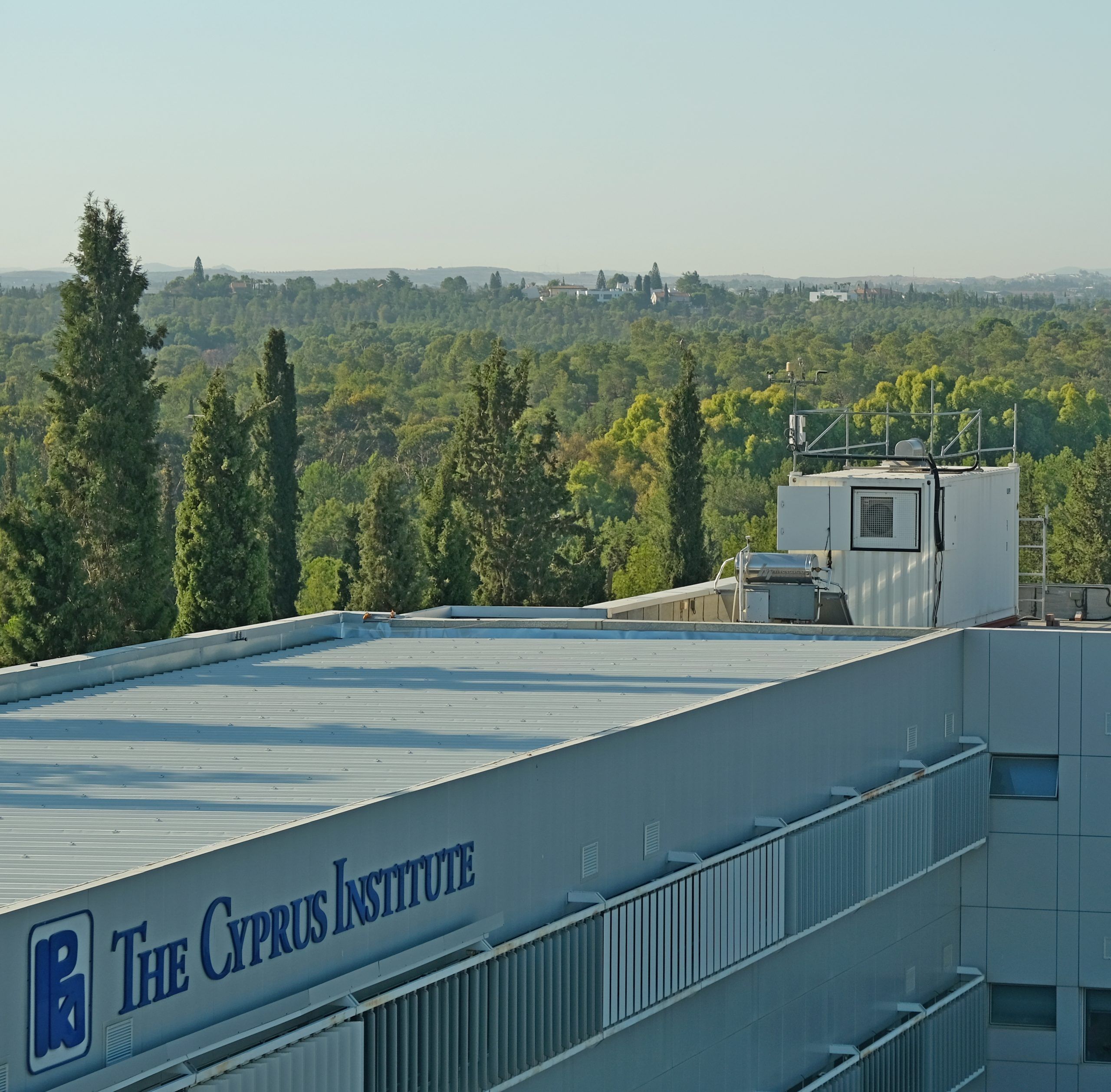
Record-High Greenhouse Gas Emissions in Cyprus, research by CARE-C of the Cyprus Institute reveals
As part of its commitment towards addressing the climate crisis, the Climate and Atmosphere Research Centre (CARE-C) of the Cyprus Institute (CyI), in collaboration with the Climate and Environment Sciences Laboratory (LSCE) in France and the University of Bremen in Germany, have released findings on the levels of greenhouse gas (GHG) concentrations in Cyprus, based on the first five years of continuous GHG monitoring they have conducted on the island. These data, pertaining specifically to monitoring of carbon dioxide (CO₂) and methane (CH₄), reveal a persistent annual increase in the levels of these two key greenhouse gases, despite international efforts to curb emissions under the Paris Agreement. Long-term measurements are crucial for scientists to be able to independently assess the amounts of GHGs emitted and understand how they can be reduced. Cyprus, and the wider Eastern Mediterranean and Middle East (EMME) region, has been identified as a climate change hotspot, and faces escalating environmental pressures that threaten its ecosystems, economies, and societies. The findings of this latest research highlight the growing burden of GHG emissions in driving climate change. CARE-C’s work further highlights the urgent need for climate action to address these challenges and support global climate goals.
Introduction
The World Meteorological Organization (WMO) recently confirmed that 2024 was the hottest year ever recorded, marking the first time global warming exceeded the symbolic threshold of 1.5°C above pre-industrial levels – a limit set by the 2015 Paris Agreement, to avoid severe consequences. The effects of climate change, such as heatwaves, fires, rising sea levels, ravaging biodiversity, droughts, floods, are perceptible and adverse. This environmental degradation represents one of the most pressing challenges of our time.
Although the impact of anthropogenic greenhouse gas (GHG) emissions on the climate system began with the mass exploitation of coal at the end of the 19th century, it was not widely recognized as a significant climate-altering factor by scientists until the mid-1990s. Greenhouse gases (GHG) act as an invisible layer around the Earth, trapping heat from the warm Earth, that would have otherwise escaped to space. This process helps regulate the temperature required for sustaining life. Without the greenhouse effect, the average surface temperature of Earth would be a freezing -18°C instead of the +15°C that we experience today. However, high GHG concentrations – mainly from fossil fuel combustion, agriculture, and industrial activities—are disrupting this balance, driving global warming and its cascading effects – rising temperatures, extreme weather, and environmental degradation.
As highlighted by the Intergovernmental Panel on Climate Change (IPCC), carbon dioxide (CO2) and methane (CH4) are the two main greenhouse gases that play a critical role in driving climate change. The atmospheric concentration of CO2 has risen from 280 parts per million (ppm) around 1750 (the time reference of the Industrial Revolution, when large-scale coal exploitation began) to lately 430 ppm. Before that, this concentration had never exceeded 300 ppm in the past 800,000 years. The concentration of methane, a potent greenhouse gas, increased from approximately 0.7 ppm to 2.027 ppm over the same period.
While the increasing burden of GHG in the atmosphere is altering the climate of the planet, the Eastern Mediterranean and Middle East (EMME) has been recognized as a climate change hotspot region, and the fourth emitter of CO2 in the world behind Asia, North America, and Western Europe.
Consequently, high-precision monitoring of these gases in the EMME region is crucial for understanding their regional emissions, assessing the effectiveness of climate policies, and guiding efforts in the Paris Agreement. Such long-term measurements are also necessary for the climatologists to better quantify independently how much GHG we emit, and how they are removed from the atmosphere.
Method
To address this gap, The Climate & Atmosphere Centre of Excellence (CARE-C) of the Cyprus Institute launched a long-term initiative, with two of the top climate research institutions in Europe: the Climate and Environment Sciences Laboratory (LSCE) in France and the University of Bremen in Germany, in order to track atmospheric abundances of carbon dioxide and methane.
To this end, the Cyprus Institute has set up and operates two distinct GHG measurement stations. The first one, in Nicosia, observes greenhouse gases across the entire atmosphere column (0-70 km altitude) above the island; making it ideal for detecting even plumes transported from the other side of the planet. It is equipped with a sun-looking spectrometer that deduces GHG abundances by detecting subtle changes in how the atmosphere absorbs infrared sunlight. This advanced instrument provides measurements of atmospheric concentrations of CO2, CH4 and other gases; data that are essential for validating Earth-observing satellite missions and evaluating model simulations, aiming to understand broader atmospheric trends.
The second station is located at Ineia, on a hilltop within the remote and natural Akamas Peninsula, and was installed according to the specifications recommended by ICOS (with the aim of integrating the European Research Infrastructure). These high-precision measurements of CO2 and CH4 play a crucial role in detecting and tracking emissions from regions such as the Middle East and Eastern Europe, areas where other global monitoring sites have limited coverage. By comparing the data of Ineia with measurements from Jungfraujoch, the Swiss UNESCO World Heritage site, which represents the European atmospheric background (see Figures 1 and 2), we can observe significant differences that highlight regional processes influencing the Eastern Mediterranean.
Together, these stations form a unique complementary monitoring infrastructure, delivering high-quality data to support both regional (EMME) and global climate studies. Their dual focus: ground-level concentrations and atmospheric columns, establishes Cyprus as a key contributor to the global effort in understanding and addressing climate change. Maintaining these long-term GHG observations over the island is therefore of critical importance, at a time where the Government of Cyprus is reviving its Regional (Eastern Mediterranean & Middle East) Climate Change Initiative.
Results
As part of its contribution to International Networks that monitor GHG concentrations worldwide, the Cyprus Institute (CyI) presents the first five years of continuous monitoring of carbon dioxide (CO2) (Figure 1) and methane (CH4) (Figure 2) in Cyprus. These measurements document the sustained growth rate of these two gases, year after year, despite international efforts to decrease their emissions as part of the Paris Agreement and highlight the importance of high-precision measurements of GHG in understanding regional emissions, evaluating climate policies, and supporting the Paris Agreement, while also helping climatologists quantify GHG emissions and removal more accurately.

Figure 1: Carbon dioxide measurements in Cyprus; Nicosia in green and Ineia in red. The light blue and orange lines represent measurements at the reference sites of Mauna Loa in Hawaii and Jungfraujoch in Switzerland. This plot highlights the sustained growth rate of CO2, where at the INEIA station, measured concentration has already exceeded the 430 ppm mark for the first time in January 2025.

Figure 2: Methane measurements in Cyprus; Nicosia in green and Ineia in red. The light blue and orange lines represent measurements at the reference sites of Mauna Loa in Hawaii and Jungfraujoch in Switzerland. CH4 also presents an increasing trend, with the INEIA site recording on average higher concentration levels than the European background site.
Data access:
INEIA : https://emme-care.cyi.ac.cy/data/ineia/
Mauna Loa : https://gml.noaa.gov/ccgg/trends/data.html
ICOS-CP Jungfraujoch CO2 NRT : https://meta.icos-cp.eu/objects/co10PpHeje1nK0taqBlSCD6o
ICOS-CP Jungfraujoch CH4 NRT : https://hdl.handle.net/11676/ki9RAAfTGZQogp5e39AJbDnm
ICOS-CP Jungfraujoch CO2: https://meta.icos-cp.eu/objects/4-Kot58QX1b5u-e8SGD8XTPy
ICOS-CP Jungfraujoch CH4: https://meta.icos-cp.eu/objects/9BmAUqYgyNKW2hWP-Kq0X5sI




